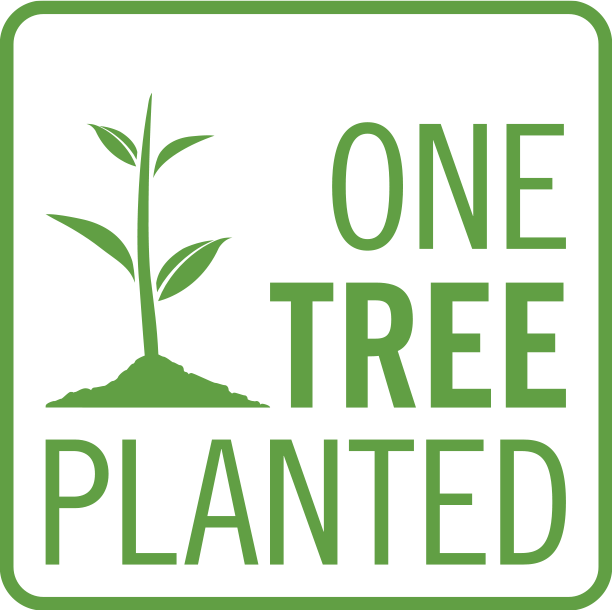Advances in Digital Archaeology
Proceedings of the 2023 conference Computer Applications and Quantitative Methods in Archaeology – 50 years of synergy
Edited by J.W.H.P. Verhagen, J. Waagen, A. Brandsen, A. Queffelec, R.M. Visser & D. Taelman | Forthcoming

Advances in Digital Archaeology
Proceedings of the 2023 conference Computer Applications and Quantitative Methods in Archaeology – 50 years of synergy
Edited by J.W.H.P. Verhagen, J. Waagen, A. Brandsen, A. Queffelec, R.M. Visser & D. Taelman | Forthcoming
Paperback ISBN: 9789464271355 | Hardback ISBN: 9789464271362 | Imprint: Sidestone Press Academics | Format: 210x280mm | ca. 340 pp. | Language: English | 21 illus. (bw) | 183 illus. (fc) | Keywords: digital archaeology; computational archaeology; archaeological remote sensing; 3D modeling; 3D analysis; virtual reconstruction; geographic information systems; image analysis; archaeological data management | download cover | DOI: 10.59641/d4g5a1b2c3 | CC-license: CC BY 4.0
Publication date: 28-11-2025
-
Digital & Online access
Digital/Online version not (yet) available
-
Buy via Sidestone (EU & UK)
Get €5.00 discount on forthcoming books by using coupon code "PRE-ORDER" in your shopping cart!
-
Buy via our Distributors (WORLD)
For non-EU or UK destinations you can buy our books via our international distributors. Although prices may vary this will ensure speedy delivery and reduction in shipping costs or import tax. But you can also order with us directly via the module above.
For UK & other International destinations
For USA/Canada & other International destinations
-
Bookinfo
Paperback ISBN: 9789464271355 | Hardback ISBN: 9789464271362 | Imprint: Sidestone Press Academics | Format: 210x280mm | ca. 340 pp. | Language: English | 21 illus. (bw) | 183 illus. (fc) | Keywords: digital archaeology; computational archaeology; archaeological remote sensing; 3D modeling; 3D analysis; virtual reconstruction; geographic information systems; image analysis; archaeological data management | download cover | DOI: 10.59641/d4g5a1b2c3 | CC-license: CC BY 4.0
Publication date: 28-11-2025

We will plant a tree for each order containing a paperback or hardback book via OneTreePlanted.org.
This volume showcases cutting-edge research in digital archaeology, presenting 27 chapters that explore how computational methods are transforming archaeological fieldwork, analysis, data management, and interpretation. Topics range from AI applications in artefact classification and spatial modelling, to 3D reconstructions, machine learning, remote sensing, and natural language processing. The contributions highlight the integration of digital tools with archaeological theory, demonstrating how this synergy is reshaping the discipline and expanding its methodological frontiers.
Spanning case studies from Jordan to Northern Italy, from Viking silver hoards to Roman roads and Pompeian neighbourhoods, the volume offers an international and interdisciplinary perspective. Whether dealing with digital archiving, coin hoards, funerary networks, or bioarchaeological workflows, each chapter contributes to a nuanced understanding of how archaeologists are leveraging digital technologies to ask new questions and revisit old data.
The book originated as the proceedings of the 50th annual Computer Applications and Quantitative Methods in Archaeology (CAA) conference, held in Amsterdam in April 2023, celebrating half a century of innovation in computational archaeology.
Preface
Philip Verhagen, Jitte Waagen, Alex Brandsen, Ronald Visser & Devi Taelman
Chapter 1. Cultural Significance Assessment of Archaeological Sites for Heritage Management: From Text of Spatial Networks of Meanings
Yael Alef & Yuval Shafriri
Chapter 2. Body Mapping the Digital: Visually representing the impact of technology on archaeological practice
Leila H. Araar, Colleen Morgan & Louise Fowler
Chapter 3. Survey Planning, Allocation, Costing and Evaluation (SPACE) Project: Developing a Tool to Help Archaeologists Conduct More Effective Surveys
Edward B. Banning, Steven Edwards & Isaac Ullah
Chapter 4. Visual encoding of a 3D virtual reconstruction’s scientific justification: feedback from a proof-of-concept research
Jean-Yves Blaise, Iwona Dudek, Laurent Bergerot & Gaël Simon
Chapter 5. Archaeology specific BERT models for English, German, and Dutch
Alex Brandsen
Chapter 6. Inferring shellfishing seasonality from the isotopic composition of biogenic carbonate: a Bayesian approach
Jordan Brown & Gabriel Lewis
Chapter 7. The Dynamic Collections – a 3D Web Platform of Archaeological Artefacts designed for Data Reuse and Deep Interaction
Marco Callieri, Åsa Berggren, Nicolò Dell’Unto, Paola Derudas, Domenica Dininno, Fredrik Ekengren & Giuseppe Naponiello
Chapter 8. Spaces of funeral meaning. Modelling socio-spatial relations in burial contexts
Aline Deicke
Chapter 9: HORAI: An integrated management model for historical information
Pablo del Fresno-Bernal, Sonia Medina-Gordo & Esther Travé-Allepuz
Chapter 10. Supporting the analysis of a large coin hoard with AI-based methods
Chrisowalandis Deligio, Karsten Tolle & David Wigg-Wolf
Chapter 11. Study and enhancement of the heritage value of a fortified settlement along the Limes Arabicus. Umm ar-Rasas (Amman, Jordan) between remote sensing analysis, photogrammetry and laser scanner surveys
Francesca Di Palma, Roberto Gabrielli, Pasquale Merola, Ilaria Miccoli & Giuseppe Scardozzi
Chapter 12. Research workflows, paradata, and information visualisation: feedback on an exploratory integration of issues and practices – MEMORIA IS
Iwona Dudek & Jean-Yves Blaise
Chapter 13. Creating an Additional Class Layer with Machine Learning to counter Overfitting in an Unbalanced Ancient Coin Dataset
Sebastian Gampe & Karsten Tolle
Chapter 14. Similarity Network Fusion: Understanding Patterns and their Spatial Significance in Archaeological Datasets
Timo Geitlinger
Chapter 15. The transformation of an archaeological community and its resulting representations in the context of the co-development of open Archaeological Information Systems
Eric Lacombe, Dominik Lukas & Sébastien Durost
Chapter 16. Linking Scars: Topology-based Scar Detection and Graph Modeling of Paleolithic Artifacts in 3D
Florian Linsel, Jan Philipp Bullenkamp & Hubert Mara
Chapter 17. A Focus on the Future of our Tiny Piece of the Past: Digital Archiving of a Long-term Multi-participant Regional Project
Scott Madry, Gregory Jansen, Seth Murray, Elizabeth Jones, Lia Willcoxon & Ebtihal Alhashem
Chapter 18. Transforming the Archaeological Record Into a Digital Playground: a Methodological Analysis of The Living Hill Project
Samanta Mariotti
Chapter 19. Social Network Analysis, Community Detection Algorithms, and Neighbourhood Identification in Pompeii
Matthew Notarian
Chapter 20. Rivers vs. Roads? A route network model of transport infrastructure in Northern Italy during the Roman period
James Page
Chapter 21. CORPUS NUMMORUM – A Digital Research Infrastructure for Ancient Coins
Ulrike Peter, Claus Franke, Jan Köster, Karsten Tolle, Sebastian Gampe & Vladimir F. Stolba
Chapter 22. ARIADNEplus Visual Media Service 3D configurator: toward full guided publication of high-resolution 3D data
Marco Potenziani, Federico Ponchio, Marco Callieri & Paolo Cignoni
Chapter 23. Percolation Package – From script sharing to package publication
Sophie C. Schmidt & Simon Maddison
Chapter 24. Machine Learning for UAV and Ground-Captured Imagery: Toward Standard Practices
Kayeleigh Sharp, Brooklyn Christofis, Hossein Eslamiat, Upesh Nepal & Carlos Osores Mendives
Chapter 25. 3Duewelsteene – A website for the 3D visualisation of the megalithic passage grave Düwelsteene near Heiden in Westphalia, Germany
Louise Tharandt
Chapter 26. Mobility and the reuse of Roman Roads for the deposition of Viking Age silver hoards in North-West England
Wyatt Wilcox
Chapter 27. Establishing a workflow for recording and analysing bioarchaeological data
Kiriakos Xanthopoulos, Aggeliki Georgiadou & Christina Papageorgopoulou
Dr. J.W.H.P. Verhagen
Philip Verhagen is associate professor at the Faculty of Humanities, Vrije Universiteit Amsterdam, specialized in computer applications and quantitative methods in archaeology, with an emphasis on GIS, spatial analysis and modelling. Dr. Verhagen’s research focuses on the methodological and theoretical aspects of spatial analysis and modelling in landscape archaeology. He has published widely on archaeological predictive modelling and settlement pattern analysis, as well as on the application of agent-based modelling of ancient land use and demography and network analysis, focusing primarily on Roman archaeology in the Netherlands.
Dr. J. Waagen
Jitte Waagen is a digital archaeology specialist at the Amsterdam Center for Ancient Studies and Archaeology, as well as coordinator of the 4D Research Lab, at the University of Amsterdam. His research interests include landscape archaeology, methodology, remote sensing, GeoICT, and virtual archaeology.
Dr. A. Brandsen
Alex Brandsen is a digital archaeologist specialising in text mining and machine learning. He finalised his PhD in 2022 and is currently working as a postdoc at Leiden University, where he is creating an intelligent search engine for archaeological texts. He has been an organiser of the Digital Archaeology Group for 4 years, and has recently joined the CAA-NL-FL local chapter as Communications Officer.
Dr. A. Queffelec
Alain Queffelec is a specialist of archaeometry of lithic materials at the CNRS, based at the UMR5199 PACEA laboratory at the University of Bordeaux. He employs different techniques of spectroscopy and microscopy to characterize raw materials and archaeological artifacts from various periods and contexts, including the Ceramic Age of the Caribbean islands. Additionally, he devotes part of his time to Open Science initiatives, notably as the founder of PCI Archaeology.
Dr. R.M. Visser
Ronald Visser is a senior lecturer in Archaeology and researcher for the lectorate Sustainable Areas and Soil Transitions at Saxion University of Applied Sciences. He is an interdisciplinary researcher focussing on archaeology, data science, dendrochronology, Roman period, conflict archaeology and education.
Dr. D. Taelman
Devi Taelman is a postdoctoral researcher at the Vrije Universiteit Brussel, Belgium. His research focuses on digital archaeology, landscape archaeology, human-environment interactions in Roman Antiquity, and the economic history of the Roman world.
Abstract:
This volume showcases cutting-edge research in digital archaeology, presenting 27 chapters that explore how computational methods are transforming archaeological fieldwork, analysis, data management, and interpretation. Topics range from AI applications in artefact classification and spatial modelling, to 3D reconstructions, machine learning, remote sensing, and natural language processing. The contributions highlight the integration of digital tools with archaeological theory, demonstrating how this synergy is reshaping the discipline and expanding its methodological frontiers.
Spanning case studies from Jordan to Northern Italy, from Viking silver hoards to Roman roads and Pompeian neighbourhoods, the volume offers an international and interdisciplinary perspective. Whether dealing with digital archiving, coin hoards, funerary networks, or bioarchaeological workflows, each chapter contributes to a nuanced understanding of how archaeologists are leveraging digital technologies to ask new questions and revisit old data.
The book originated as the proceedings of the 50th annual Computer Applications and Quantitative Methods in Archaeology (CAA) conference, held in Amsterdam in April 2023, celebrating half a century of innovation in computational archaeology.
Contents
Preface
Philip Verhagen, Jitte Waagen, Alex Brandsen, Ronald Visser & Devi Taelman
Chapter 1. Cultural Significance Assessment of Archaeological Sites for Heritage Management: From Text of Spatial Networks of Meanings
Yael Alef & Yuval Shafriri
Chapter 2. Body Mapping the Digital: Visually representing the impact of technology on archaeological practice
Leila H. Araar, Colleen Morgan & Louise Fowler
Chapter 3. Survey Planning, Allocation, Costing and Evaluation (SPACE) Project: Developing a Tool to Help Archaeologists Conduct More Effective Surveys
Edward B. Banning, Steven Edwards & Isaac Ullah
Chapter 4. Visual encoding of a 3D virtual reconstruction’s scientific justification: feedback from a proof-of-concept research
Jean-Yves Blaise, Iwona Dudek, Laurent Bergerot & Gaël Simon
Chapter 5. Archaeology specific BERT models for English, German, and Dutch
Alex Brandsen
Chapter 6. Inferring shellfishing seasonality from the isotopic composition of biogenic carbonate: a Bayesian approach
Jordan Brown & Gabriel Lewis
Chapter 7. The Dynamic Collections – a 3D Web Platform of Archaeological Artefacts designed for Data Reuse and Deep Interaction
Marco Callieri, Åsa Berggren, Nicolò Dell’Unto, Paola Derudas, Domenica Dininno, Fredrik Ekengren & Giuseppe Naponiello
Chapter 8. Spaces of funeral meaning. Modelling socio-spatial relations in burial contexts
Aline Deicke
Chapter 9: HORAI: An integrated management model for historical information
Pablo del Fresno-Bernal, Sonia Medina-Gordo & Esther Travé-Allepuz
Chapter 10. Supporting the analysis of a large coin hoard with AI-based methods
Chrisowalandis Deligio, Karsten Tolle & David Wigg-Wolf
Chapter 11. Study and enhancement of the heritage value of a fortified settlement along the Limes Arabicus. Umm ar-Rasas (Amman, Jordan) between remote sensing analysis, photogrammetry and laser scanner surveys
Francesca Di Palma, Roberto Gabrielli, Pasquale Merola, Ilaria Miccoli & Giuseppe Scardozzi
Chapter 12. Research workflows, paradata, and information visualisation: feedback on an exploratory integration of issues and practices – MEMORIA IS
Iwona Dudek & Jean-Yves Blaise
Chapter 13. Creating an Additional Class Layer with Machine Learning to counter Overfitting in an Unbalanced Ancient Coin Dataset
Sebastian Gampe & Karsten Tolle
Chapter 14. Similarity Network Fusion: Understanding Patterns and their Spatial Significance in Archaeological Datasets
Timo Geitlinger
Chapter 15. The transformation of an archaeological community and its resulting representations in the context of the co-development of open Archaeological Information Systems
Eric Lacombe, Dominik Lukas & Sébastien Durost
Chapter 16. Linking Scars: Topology-based Scar Detection and Graph Modeling of Paleolithic Artifacts in 3D
Florian Linsel, Jan Philipp Bullenkamp & Hubert Mara
Chapter 17. A Focus on the Future of our Tiny Piece of the Past: Digital Archiving of a Long-term Multi-participant Regional Project
Scott Madry, Gregory Jansen, Seth Murray, Elizabeth Jones, Lia Willcoxon & Ebtihal Alhashem
Chapter 18. Transforming the Archaeological Record Into a Digital Playground: a Methodological Analysis of The Living Hill Project
Samanta Mariotti
Chapter 19. Social Network Analysis, Community Detection Algorithms, and Neighbourhood Identification in Pompeii
Matthew Notarian
Chapter 20. Rivers vs. Roads? A route network model of transport infrastructure in Northern Italy during the Roman period
James Page
Chapter 21. CORPUS NUMMORUM – A Digital Research Infrastructure for Ancient Coins
Ulrike Peter, Claus Franke, Jan Köster, Karsten Tolle, Sebastian Gampe & Vladimir F. Stolba
Chapter 22. ARIADNEplus Visual Media Service 3D configurator: toward full guided publication of high-resolution 3D data
Marco Potenziani, Federico Ponchio, Marco Callieri & Paolo Cignoni
Chapter 23. Percolation Package – From script sharing to package publication
Sophie C. Schmidt & Simon Maddison
Chapter 24. Machine Learning for UAV and Ground-Captured Imagery: Toward Standard Practices
Kayeleigh Sharp, Brooklyn Christofis, Hossein Eslamiat, Upesh Nepal & Carlos Osores Mendives
Chapter 25. 3Duewelsteene – A website for the 3D visualisation of the megalithic passage grave Düwelsteene near Heiden in Westphalia, Germany
Louise Tharandt
Chapter 26. Mobility and the reuse of Roman Roads for the deposition of Viking Age silver hoards in North-West England
Wyatt Wilcox
Chapter 27. Establishing a workflow for recording and analysing bioarchaeological data
Kiriakos Xanthopoulos, Aggeliki Georgiadou & Christina Papageorgopoulou
Dr. J.W.H.P. Verhagen
Philip Verhagen is associate professor at the Faculty of Humanities, Vrije Universiteit Amsterdam, specialized in computer applications and quantitative methods in archaeology, with an emphasis on GIS, spatial analysis and modelling. Dr. Verhagen’s research focuses on the methodological and theoretical aspects of spatial analysis and modelling in landscape archaeology. He has published widely on archaeological predictive modelling and settlement pattern analysis, as well as on the application of agent-based modelling of ancient land use and demography and network analysis, focusing primarily on Roman archaeology in the Netherlands.
Dr. J. Waagen
Jitte Waagen is a digital archaeology specialist at the Amsterdam Center for Ancient Studies and Archaeology, as well as coordinator of the 4D Research Lab, at the University of Amsterdam. His research interests include landscape archaeology, methodology, remote sensing, GeoICT, and virtual archaeology.
Dr. A. Brandsen
Alex Brandsen is a digital archaeologist specialising in text mining and machine learning. He finalised his PhD in 2022 and is currently working as a postdoc at Leiden University, where he is creating an intelligent search engine for archaeological texts. He has been an organiser of the Digital Archaeology Group for 4 years, and has recently joined the CAA-NL-FL local chapter as Communications Officer.
Dr. A. Queffelec
Alain Queffelec is a specialist of archaeometry of lithic materials at the CNRS, based at the UMR5199 PACEA laboratory at the University of Bordeaux. He employs different techniques of spectroscopy and microscopy to characterize raw materials and archaeological artifacts from various periods and contexts, including the Ceramic Age of the Caribbean islands. Additionally, he devotes part of his time to Open Science initiatives, notably as the founder of PCI Archaeology.
Dr. R.M. Visser
Ronald Visser is a senior lecturer in Archaeology and researcher for the lectorate Sustainable Areas and Soil Transitions at Saxion University of Applied Sciences. He is an interdisciplinary researcher focussing on archaeology, data science, dendrochronology, Roman period, conflict archaeology and education.
Dr. D. Taelman
Devi Taelman is a postdoctoral researcher at the Vrije Universiteit Brussel, Belgium. His research focuses on digital archaeology, landscape archaeology, human-environment interactions in Roman Antiquity, and the economic history of the Roman world.
-
Digital & Online access
Digital/Online version not (yet) available
-
Buy via Sidestone (EU & UK)
Get €5.00 discount on forthcoming books by using coupon code "PRE-ORDER" in your shopping cart!
-
Buy via our Distributors (WORLD)
For non-EU or UK destinations you can buy our books via our international distributors. Although prices may vary this will ensure speedy delivery and reduction in shipping costs or import tax. But you can also order with us directly via the module above.
For UK & other International destinations
For USA/Canada & other International destinations
- Browse all books by subject
-
Search all books

We will plant a tree for each order containing a paperback or hardback book via OneTreePlanted.org.
You might also like:
© 2025 Sidestone Press KvK nr. 28114891 Privacy policy Sidestone Newsletter Terms and Conditions (Dutch)








